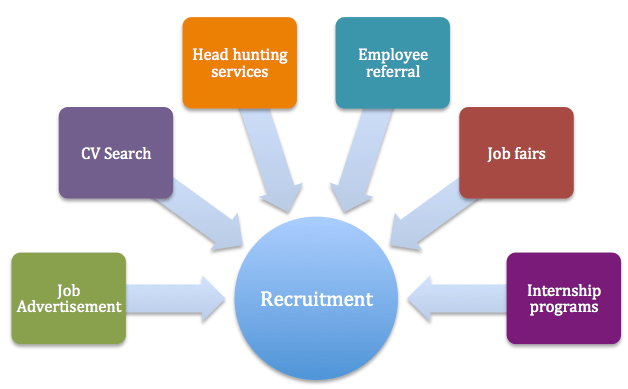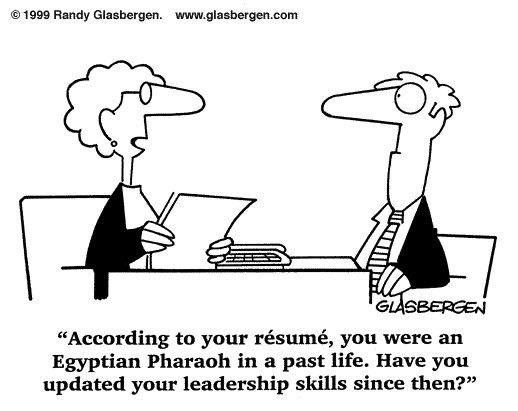After nearly 3 years of operating , the startup software company that I had been working for was shut down in January 2013. The main reasons were that our product failed to get users and we couldn’t make any money while millions of dollars had been spent on the company of which size might be too large for a startup. In my opinion, the root causes of our company’s failure were not that straight forward, instead they were the combination of many factors: the people, the business model, the management, the absent of lean startup approach and also the organizational culture. In this post, the impact of organizational culture to the failure of a startup may be revealed via the analysis that I sent to the founder of the company and my boss, the VP just a few days before it was shut down. For the reason of anonymity, real names will not be used in this post (they are in the original version of my analysis). The company will be mentioned here as SK and people name will be changed to something like A, J or K.
So here it is:
An organizational culture analysis for SK
1. Purpose and Scope
Starting from May 2011, I have been working for SK for nearly two years. Being a project manager also gives me an advantage: having opportunity to work directly with all delivery teams as well as with all levels of staff, ranging from Executive to middle managers and down to team members. With those experiences and the knowledge in organizational behavior, I have realized that SK currently have some issues with its organizational culture. Trying to be responsible, I feel an obligation to reflect those issues via this analysis. It is very important to understand that this analysis is not meant to be offensive to SK as well as to any of its employees. Names are mentioned just because they can provide detailed and specific examples. This analysis is presented purely for contributing and constructive purpose: to help SK to identify and analyze its problems in order to become a better, healthier and more effective organization.
In terms of scope, since I work mostly within the tech teams, this analysis will focus mainly on the tech teams. However, this is still valuable due to the fact that tech teams represent a significant majority of SK. In addition, the solutions suggested in this analysis may not cover all of the issues.
2. SK: Still a startup
First of all, it is very important to confirm whether SK is still a startup or not because appropriate strategic plan, organizational culture and structure of a startup are significantly different from a big cooperate. With more than 3 years old and over 100 employees, SK, in my opinion, is still a startup for the following reasons:
- Its products and services have not been officially released yet.
- It does not have a large number of users or customers.
- And most importantly, it is still searching for a repeatable and scalable business model. As long as the organization is still figuring out how to make money, it is a startup by the most common definition of startup.
3. A first glance at SK’s seven key dimension of organizational culture
Organizational culture is something people talk about all the time and so do us at SK. Unfortunately, not everyone can understand clearly what exactly organizational culture is and especially how to identify, measure or characterize it. By definition, organizational culture is a set of basic beliefs and assumptions that are shared by members of an organization, showing them what are appropriate and inappropriate behaviors. In other words, organizational culture is basically “how we do things around here”. There are several approach to identify and “measure” organizational culture and the one that is used here is called the “seven key dimensions of organizational culture”, which are:
- Individual autonomy: the level of responsibility, independence and empowerment that an individual has in the organization.
- Structure: the number of rules and regulations, the number of hierarchical levels in the organizational structure.
- Support: the degree of assistance provided by managers to their subordinates.
- Identification: the level of pride that members have to be part of the organization.
- Performance reward: the degree to which reward allocations (promotions, salary increases, bonus…) are based on performance criteria.
- Conflict tolerance: the level of conflict exists in the relationships between members of the organization.
- Risk tolerance: the degree to which employees are encouraged to be aggressive, innovative, and risk seeking.
So now we agree that SK is still a startup despite of its age and size, let’s have a quick look at the high level of its organizational culture to see if the culture is appropriate for a software startup company or not:
Individual Autonomy
- Expected: High
- Actual: Low to Medium
- Details: Low level of individual autonomy is demonstrated by the presence of micromanagement, centralized decision making and lack of empowerment. One possible reason for this is the lack of trust between managers and staff, which will be discussed in details later.
Structure
- Expected: Low
- Actual: Medium and increasing
- Details: The company does not have a lot of rules and policies comparing to big cooperate and this is good for a startup. However, the organizational structure may not be flat any more due to the fact that we have 5 levels of hierarchy from the CEO to a developer and very narrow span of control (a lot of managers/leaders manage just a few subordinates). In addition, decision-making is usually centralized and the number of rules and policies are increasing. Generally speaking, the Structure dimension is now medium but it now has the tendency to increase to High, which make us become more and more bureaucratic and that is definitely not healthy for a startup.
Support
- Expected: High
- Actual: Low to Medium, varied from managers to managers
- Details: Staffs rarely seek help from managers and hence, managers also rarely help staffs. One possible reason for this is the lack of trust between managers and staff, which will be discussed in details later.
Identification
- Expected: High
- Actual: Low
- Details: This used to be high in the past but it has dropped significantly. Nowadays, fewer and fewer employees are proud of being part of SK. This can be explained by two reasons:
- We haven’t had successful products for a very long time
- Our environments (including organizational culture) become less and less healthy and attractive.
Performance Reward
- Expected: High
- Actual: High
- Details: We are definitely performance oriented. A lot to extrinsic motivations are offered such as salary raise, month bonus and stock options. However, we should also consider offering more intrinsic motivations to the staff. In addition, we should also review our performance appraisal system to make sure that it is accurate, fair and actually motivate the employees in the way that we want them to.
Conflict Tolerance
- Expected: Moderately High
- Actual: Uncontrollably High
- Details: Conflicts are healthy when they are related to work, encourage creativity and are not personal conflicts. However, I would say that we are failing to control and moderate this dimension of the organizational culture. Conflicts at SK become more and more personal and they start to have negative impacts to the company. More details about this will be discussed later.
Risk Tolerance
- Expected: High
- Actual: Medium and decreasing
- Details: As a startup software company, we should have a high level of risk tolerance to and try and find our repeatable and scalable business model. However, it seems to me that we are becoming more and more risk-averse. We start to think more like a big cooperate that is reluctant to changes and looks for stability. In my opinions, having too many development environments, too many deployment policies and not trying feature-teams as well as not trying Kanban for DFS team are some examples of risk-averse.
4. A closer look at organizational culture issues at SK: The top three critical ones
So those are the seven key dimensions of SK’s organizational culture at the high level. In this section, I would like to look at specific issues that we have at SK in more details. Here are the top three that are the most critical ones in my opinion:
Lack of trust:
In my opinion, this is the most critical issue that we have at the moment and it is the root cause of many other issues. At SK, we can these signs of the absence of trust:
- People usually try to show that they are better than the others. They rarely, or never, share about their weaknesses.
- People avoid admitting the mistakes that they make.
- People hesitate to offer help outside their own areas of responsibility or provide constructive feedback to others.
- People doubt other’s skills and commitment.
- People avoid meetings or spending to work on an issue together, thinking that is a waste of time.
- People jump to conclusions about the intentions and aptitudes of others without attempting to clarify them.
- People are reluctant, or refuse, to share performance goals with others.
- Micromanagement is popular.
As we can see, lack of trust occurs in every interaction between and within teams. Examples can be found everywhere:
- S. doesn’t trust the developers in terms of their skills, productivity and commitment.
- Server team doubts Q.’s skills and understandings about the product.
- A. doesn’t think that K.’s design is good.
- A is concerned about J.’s skills and working attitude.
- Server team doesn’t want to have meetings or work together, thinking that is a waste of time.
- J. and Server team refuse to share team goals together.
- …. and many more
No one should be blamed in these cases. It’s not S.’s fault to not to trust the Server developers and vice versa. But why does this happen? What are the root causes of the lack of trust at SK?
There is actually a
model for trust, which says that trust between two parties is influenced by ten factors. Using this model for trust, here are some of the reasons that can explain the lack of trust at SK, listed from the most to the less important ones:
- Lack of capability: People only trust those who are capable to fulfill the expectation of the trust. You cannot trust a person if he does not have the capability, no matter how many similarities, aligned interests and benevolent concern that he has. At SK, lack of capability is the explanation for most of the absence of trust. In most case, one party doesn’t *think* that the other have enough skills and commitment to fulfill the expectation of the trust. Please note that the lack of capability of the “trustee” is just the *assumption* of the “truster”. Whether the “trustee” is lack of capability or not is another issue. This is related to the second reason, which is:
- Lack of communication: This can also lead to the absence of trust in many cases, especially between different teams or between people that have different native languages. Lack of communication also leads to wrong assumption about other’s capability and attitude. Lack of communication also prevents the truster and trustee from acknowledging the similarities between them.
- Lack of similarities: Lack of similarities in terms of working style, working attitude, norms and expectations can also sometimes explain the absence of trust, especially between employees of different ethnic groups.
- Lack of benevolent concern: Our recruitment criteria is to hire only the “A players”. Whether all of our employees are the “A players” or not is another issue but there is a fact that most of them have quite big ego. As long as people are not willing to sacrifice their benefits or put themselves at risk for the others, it is very less likely for them to be able to gain trust from the others.
Lack of trust can have more critical impacts than we think. Lack of trust can be the root cause of other issues:
- More micromanagement and lack of empowerment, which in turn leads to the failure of creating self-managed and self-organized teams. This is caused by the lack of trust that managers have to their subordinates.
- Bureaucratic structure and decision-making.
- Low level of support. This is caused by the lack of trust that subordinates have to their managers.
- Unhealthy conflicts and personal conflicts
- Stressful working environment
- Demotivation
- People become more risk-averse
Conflicts are not controlled and moderated:
Conflict itself is not a bad thing. Conflict is healthy for an organization when it is work-related conflict that can lead to new ideas, stimulate creativity and motivate changes. However, conflicts need to be moderated and controlled so that they do not become personal and cause negative consequences:
- Increase stress and anxiety among individuals, which decreases productivity and satisfaction
- Lack of trust between team members
- Increase hostility and aggressive behaviors
- Increase turnover
Unfortunately, conflicts at SK are not controlled and moderated properly. Some of them became personal and had some of the negative consequences as listed above. Here are some examples of conflicts at SK:
- The conflict between N. and T., which led to the fight that made both of them fired.
- The conflict between A. and J.
- The conflict between J. and Server team
- The conflict between A. and Server team. This was resolved when A. left the Server team
- The conflict between me and J. regarding to API deployment
- The conflict between M. and T., which led to T. leaving SK
- The conflict between M. and new iOS developers in HCMC office, which led to M. resigning
- The developing conflict between A. and K.
- … and there can be more
So what are the root causes of those conflicts? There can be many but here are the top three in my opinion:
- Lack of trust: Again, there is a correlation between conflicts and the absence of trust.
- Unresolved conflicts in the past: This reason can be seen in all cases when the consequence of the conflicts is extreme (people get fired, people resign). N. and T. wouldn’t fought each other if their existing conflicts had been resolved earlier. Same thing could happen to M. and T.
- Differences in personalities, culture, working style, working attitude and expectations.
What I am more concerned about is the fact that we do not pay enough attention to moderating and controlling conflicts, giving them the freedom to become personal conflicts that lead to negative consequences for the organization.
Organizational culture is not officially defined and shared:
At SK, we usually talk about organizational culture but the fact is that it is not officially defined by the company and shared transparently to all employees. The company is lack of rules, policies or guidelines to enforce organizational culture. As a result, different employees and different teams have different understanding and beliefs in terms of which behaviors are appropriate and which are not. Here are some examples:
- D. and A. think that going to the office at noon is totally fine while some of the others (including me) don’t think so.
- H. thinks that having a 1.5 hours lunch, playing foosball and enjoying massage at this time (preparing for SXSW) is inappropriate whereas many others think it is totally fine.
- For A., being aggressive and interrupting people in meeting is normal but this can be offensive to some people.
Not having an officially defined and united organizational culture also lead to the following issues:
- Our culture is weak due to the fact that different parts of the company have different beliefs and shared values.
- New recruited employees are fit into only part of the culture and they may amplify culture fragmentation.
- The company is reluctant to removing people who are not culture fit due to the fact that no official and united culture is defined.
5. Other less significant issues
So those are the top three critical ones. There are also other issues that are less significant but they may be worthy to be mentioned briefly here:
- One of our top recruitment criteria is to hire only the “A players” but we may not be sure about:
- Are they actually the A players?
- Can they work together?
- Most of our employees are smart. Unfortunately, smartness usually comes with arrogance and big ego. From what I observe, our culture is lack of “learning from others” attitude, which is quite important for a startup that want to grow.
- Since I started at SK, there have been consistent joke (within the Vietnamese staff) saying that it is very normal in our culture to bragging but not actually doing and those who can talk big (about solutions, planning, achievements, etc…) are usually highly evaluated. It is just a joke but it is worthy to consider.
- It seems to me that we don’t have a culture that encourages taking responsibility or accountability when things go wrong, partially because some roles may have unclear or overlapped responsibilities. A culture that avoids blaming can be good in some cases but I think it is more professional to encourage taking responsibility or accountability when things go wrong, especially when it is well defined.
6. Some suggestions to make things better
Basically, in most cases, the solutions are kinds of embedded inside the issues themselves: Do what we should do, stop doing what we shouldn’t and fulfill what we are lack of. Here are some suggested solutions for the issues that we have at SK, focusing on the top three critical ones:
To build trust among team members:
- Encourage team lunch or one-on-one lunch for team members to communicate and know more about the others. Such events will help team members to share about themselves and learn from the others in many topics: background, family, education, hobbies, strengths and weaknesses. From there they can realize their similarities and the capabilities of the others, which can increase the likeliness of trust, as discussed in Hurley’s model for trust. From my experience, one-on-one lunch is more effective than team lunch for this purpose. People tend to share more about themselves when they are one on one with another, but not in a big group.
- Setup funny quizzes that reveal team members’ individual information (such as hobbies, skills, education, past experience, strengths and weaknesses…) and have rewards for the winner. This encourages team members to know more about each other and people tend to trust others who they know more about.
- Organize team building activities that encourage trust and collaboration between team members such as:
- Paintball: Make sure that the trusters and trustees are in the same team
- Rock climbing: One team member relay for another and vice versa. Make sure that team members know how to relay and follow all safety instructions.
- Schedule days when team members work together in pair to know more about others’ strengths and weaknesses. Moreover, working in pair also helps team members to experience the feeling of “achieving something together”, which make it easier to build trust between them.
- Consider the last option: If there is no way that we can trust the existing people then replace them with those who we can trust.
To solve the issues of unhealthy conflicts:
- Build up trust within the company
- Make it clear to all employees that personal conflicts are not normal within the organization and it is unacceptable to keep those conflicts unresolved.
- Managers should identify personal and unhealthy conflicts as soon as they arise and try to address them immediately.
- Encourage using communication to solve conflicts.
- Relocate people is also a possible solution.
- Removing people from the team/company can also be considered as one of the last options. The key here is to come to this decision actively and early, before the conflicts cause more damages to the organization.
To have a strong organizational culture:
- Define an organizational culture that is aligned with our strategic plan and make it transparent to all employees.
- Build up policies, rules or guidelines that enforce organizational culture.
- Train the employees about our expected organizational culture and make it transparent in terms of which behaviors are appropriate and which are not by using examples.
- Have a consistent process and criteria for evaluating culture fit of our job candidates.
- Willing to get rid of people who do not fit into the expected culture. The longer we keep them, the more damage they cause to our culture.
Some others:
Build an organizational culture that encourages:
- Empowerment
- Risk tolerance to experience new solutions and processes
- Learn from others
- Walk the talk
- Take responsibility and accountability when things go wrong
7. Conclusion
In conclusion, this analysis shows that some parts of the existing organizational culture at SK are not appropriate for a startup software company, which is the current state of SK. The analysis also suggests three issues that need to be addressed immediately in order to create a healthy culture:
- Lack of trust
- Conflicts are not controlled and moderated
- Organizational culture is not officially defined and shared
It should also be noted that the analysis itself also has some limitations:
- It may be subjective due to the fact that it is reflected from my point of view only.
- It focuses mainly on the issues rather than the solutions.
- It does not address the other good parts of SK’s organizational culture.
Despite those limitations, this analysis can also be served as a good starting point to systematically identify the organizational culture issues that SK currently has, which is the first and important step to find the appropriate solutions. While a healthy culture may not be vital for some companies to be functional, it is, however, quite essential for SK, a startup that wants to be a big success. Sometimes, great product can only be built by a great organization.






















